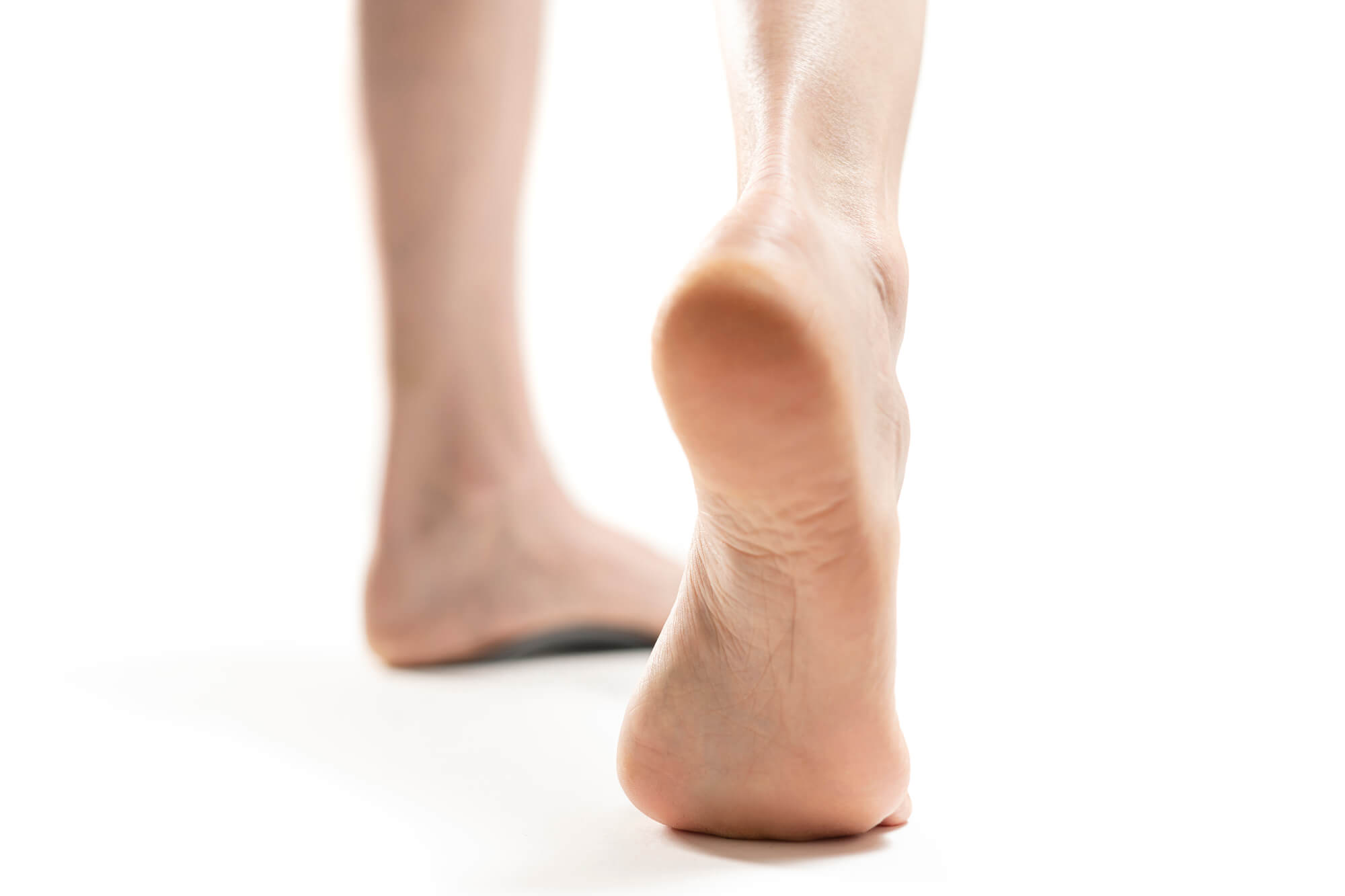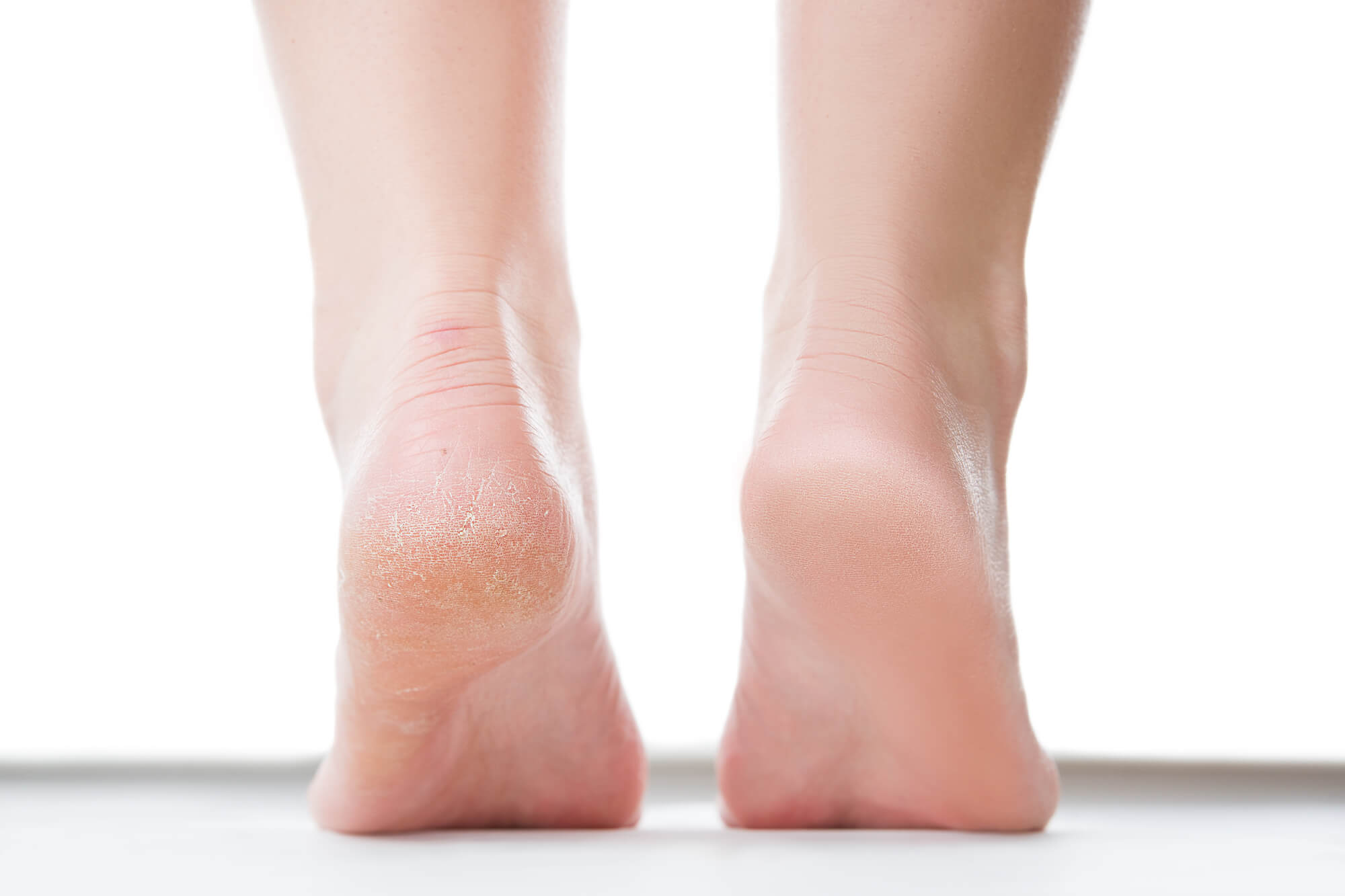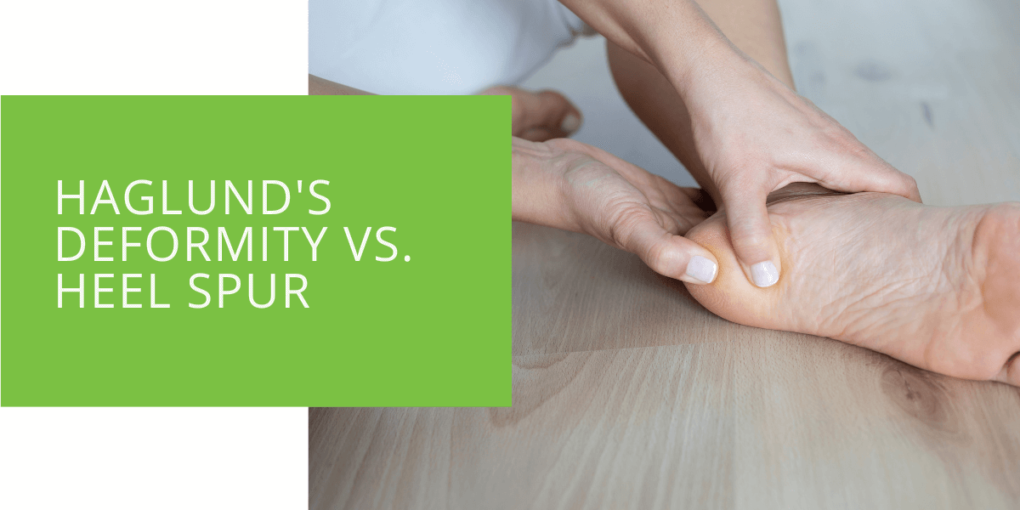Haglund’s Deformity vs. Heel Spur
If you're among the many individuals plagued by persistent heel pain, you're not alone in your discomfort. Heel pain can be debilitating, significantly impacting your daily activities and overall quality of life. Haglund's Deformity and Heel Spurs are two frequently encountered culprits contributing to this discomfort. In this comprehensive guide, we will delve into these conditions, exploring their nuanced differences, potential causes, methods of diagnosis, available treatment options, and how ePodiatrists can expertly assist you in finding much-needed relief.
Key Takeaways
- Heel pain can be attributed to various conditions, including heel spurs and Haglund's Deformity, which can cause discomfort but have distinct characteristics.
- Accurate diagnosis, often involving X-rays, MRIs, and a podiatrist's evaluation, is crucial for effective treatment planning.
- Treatment options range from non-surgical approaches like rest, ice, and orthotic devices to surgical interventions, with personalized plans tailored to individual needs, all available at ePodiatrists.
Heel Spur: The Culprit Behind Heel Pain
What is a Heel Spur?
A heel spur, a term you might have heard about heel pain, is a bony outgrowth on the underside of your heel bone, scientifically known as the calcaneus. It often develops as a response to chronic inflammation or persistent tension exerted on the heel. This tension can stem from various factors, including wearing ill-fitting shoes, having high arches, or experiencing excessive strain on the Achilles tendon.
Heel spurs, although notorious for causing heel pain, don't always directly trigger discomfort themselves. Instead, the associated inflammation and irritation in the surrounding tissues typically result in the noticeable and often sharp, stabbing pain experienced at the back of the heel or the underside. This pain is often most pronounced during the first few steps in the morning or after extended rest periods.
Identifying the Cause of Your Heel Pain
Understanding the root cause of your heel pain is crucial for effective treatment. Heel spurs are a common suspect regarding heel discomfort, and recognizing their potential role is essential.
The pain caused by heel spurs is frequently centered at the back of the heel, particularly around the area where the Achilles tendon attaches to the heel bone. It's important to note that the spur might not necessarily be the pain source. Instead, the inflammation and irritation around the spur can lead to discomfort.
Haglund's Deformity: Another Heel Pain Culprit
Exploring Haglund's Deformity
Haglund's Deformity, colloquially known as "pump bump," represents another heel condition that can contribute to your heel pain. Unlike heel spurs, which develop beneath the heel, Haglund's Deformity manifests as a bony prominence at the upper and back portion of the heel bone. It is often associated with the pressure exerted by rigid or improperly fitting footwear.
Haglund's Deformity, sometimes referred to as "pump bump" due to its association with certain shoe styles, is characterized by a bony protrusion at the rear and upper part of the heel bone. Unlike heel spurs, which form underneath the heel, this deformity affects the posterior aspect of the calcaneus. This prominence can result from continuous friction and pressure, particularly from shoes with rigid backs or not providing adequate cushioning.
Recognizing the Symptoms
Distinguishing Haglund's Deformity from other heel conditions is important for targeted treatment. This condition often presents with distinct symptoms.
Haglund's Deformity typically causes pain and swelling at the Achilles tendon's attachment point to the heel bone. The back of the heel may become red and inflamed, making it uncomfortable to wear shoes that press against the area. Over time, this inflammation can lead to bursitis, an irritation of the bursa sac surrounding the Achilles tendon.

Diagnosis and Evaluation
Evaluating Heel Pain
Both heel spurs and Haglund's Deformity can produce similar symptoms, making an accurate diagnosis essential. Seeking the expertise of a podiatrist is vital for a thorough evaluation.
Heel pain can result from various conditions, and it's not always straightforward to pinpoint the exact cause. Therefore, consulting a podiatrist is crucial to receive a precise diagnosis and appropriate treatment. They employ various diagnostic tools and techniques to assess your condition, ensuring an accurate evaluation.
Diagnostic Tools
Healthcare professionals often rely on specialized tools and imaging methods to accurately diagnose and differentiate between these conditions.
- X-ray: X-rays are commonly employed to reveal the presence of a heel spur, offering insights into its size and location.
- MRI: Magnetic Resonance Imaging (MRI) provides more detailed images of soft tissues, aiding in the diagnosis of Haglund's Deformity.
- Physical Examination: A thorough physical examination by your podiatrist will assess your symptoms and help identify the underlying cause.
Diagnostic tools are pivotal in determining the nature and severity of your heel condition. X-rays can effectively visualize heel spurs, providing valuable information regarding their size and precise location. In contrast, MRIs offer a more comprehensive view of soft tissues, facilitating the detection of Haglund's Deformity. However, a skilled podiatrist will also conduct a hands-on examination to evaluate your symptoms and ascertain the most accurate diagnosis.
Treatment Options for Heel Spur and Haglund's Deformity
Non-Surgical Treatment
Initial treatment for both heel spurs and Haglund's Deformity often involves non-invasive approaches to provide relief and promote healing.
- Rest: Allowing your foot to rest and recover from overuse is a crucial aspect of treatment.
- Ice: Applying ice to the affected area can help reduce inflammation and alleviate pain.
- Orthotic Devices: Custom-made or over-the-counter shoe inserts can redistribute pressure on the heel, relieving discomfort.
- Physical Therapy: Specialized stretching exercises and strengthening routines can enhance flexibility and reduce heel pain.
Non-surgical treatment options are often the first line of defense against heel pain. Rest is essential to allow the affected area to recover, while ice can effectively reduce inflammation and provide pain relief. Orthotic devices, whether custom-made or readily available, can help by improving the alignment of your foot and reducing pressure on the heel. Physical therapy, supervised by a trained therapist, is a valuable tool for addressing both heel spurs and Haglund's Deformity. These exercises enhance flexibility and strength in the foot and ankle, ultimately reducing pain and improving mobility.
Surgical Treatment
If conservative treatments fail to deliver the desired relief, surgical intervention may become necessary to address the underlying issues effectively.
- Incision and Removal: Surgical removal of the spur or bony prominence may be required to alleviate pain and discomfort.
- Achilles Tendon Release: In cases where the Achilles tendon is tight, releasing it surgically can help reduce tension on the heel.
- Minimally Invasive Procedures: Advanced surgical techniques, such as minimally invasive approaches, may be considered to minimize post-operative recovery time and discomfort.
Surgical options should be considered when non-surgical treatments prove ineffective. The surgical approach depends on the specific condition and its severity. Incision and removal involve surgically excising the heel spur or bony prominence to alleviate pain. In cases where the Achilles tendon is tight, a surgical release can help reduce tension on the heel. Minimally invasive procedures are an increasingly popular choice, offering shorter recovery times and reduced post-operative discomfort.

Addressing Underlying Factors
High Arches: A Common Contributor
High arches, known as pes cavus, can contribute significantly to both heel spurs and Haglund's Deformity by altering the distribution of pressure on the foot.
High arches can alter the mechanics of your feet, affecting the distribution of pressure and potentially leading to issues like heel spurs and Haglund's Deformity. Understanding the role of high arches in heel pain is crucial for effective treatment. Podiatrists can recommend suitable footwear and orthotic devices to mitigate these effects and promote healthier foot mechanics.
Footwear Matters
Choosing the right footwear is pivotal in preventing and managing heel pain. Ill-fitting shoes can exacerbate existing problems and contribute to discomfort.
Footwear is a critical factor in heel pain management. Wearing shoes that provide proper arch support and cushioning can significantly alleviate discomfort. Conversely, tight-fitting or improperly designed footwear can worsen heel pain. Choosing shoes that accommodate your specific foot shape and needs is essential to minimize the risk of heel issues.
Personalized Treatment Plans
Working with Your Podiatrist
A personalized plan tailored to your condition, lifestyle, and goals is key to effective treatment. Your podiatrist at ePodiatrists will collaborate closely with you to develop a comprehensive strategy for long-term relief from heel pain.
There's no one-size-fits-all approach to treating heel pain, as each case is unique. A crucial aspect of successful treatment is working with a podiatrist to create a personalized plan. When crafting a treatment strategy, your podiatrist will consider your specific condition, lifestyle, and objectives. This personalized approach ensures you receive the most effective and tailored care for your heel pain.
Conclusion
In the battle against heel pain, understanding the differences between Haglund's Deformity and Heel Spurs is a critical first step. Accurate diagnosis and personalized treatment plans are the keys to finding lasting relief. At ePodiatrists, we possess the expertise and experience to guide you to a pain-free life. Don't allow heel pain to limit your mobility or quality of life any longer—schedule an appointment with us today and take the first step towards healthier, happier feet.
Dealing with chronic heel pain can be frustrating and debilitating. However, you don't have to endure it in silence. You can overcome heel pain and regain mobility and comfort with the right care and treatment. At ePodiatrists, we specialize in diagnosing and treating conditions like heel spurs and Haglund's Deformity. Our experienced team is committed to helping you find relief and achieve a higher quality of life. Contact ePodiatrists now and start your journey toward healthier, pain-free heels. Your feet deserve the best care available.

